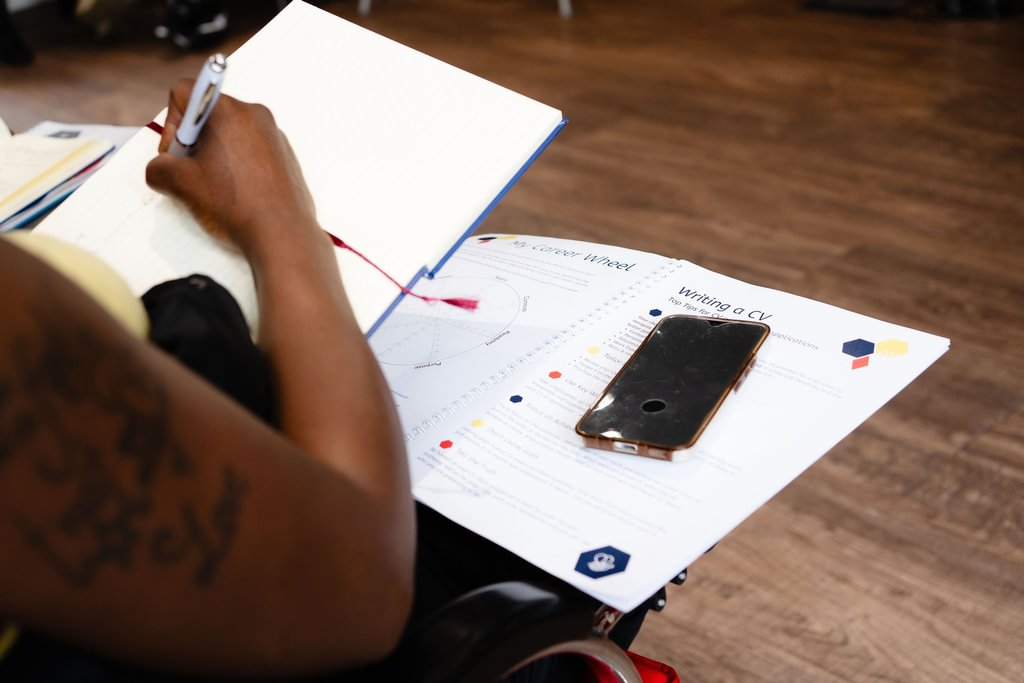How to write a great CV in 2025

Looking for work in the West of England this year? You might be starting your first job, thinking about a new career, or aiming for a promotion.
Your CV is your chance to show an employer why you are the right fit. Some employers will ask for a CV, while others will use an application form instead. The same information applies in both cases. Having a strong CV makes it easier to fill in those forms quickly and confidently, and you will often be asked to upload or copy sections of your CV into them.
It can be tricky to know what to include or where to begin, so follow this guide to help you write the perfect CV (or prepare for application forms) this year.
Or, if you feel like you would benefit from some one-to-one help putting your CV together, get in touch with our Skills Advisors.
What to include in your CV
1. Contact details
Write your name, phone number, and email. You can also say the town or area you live in, such as “Kingswood” or “Bath,” so employers know you are local.
Tip:
Make sure your email address is suitable for applying for jobs. You can create a new one just for your job search, using only your name – for instance firstname.lastname@gmail.com
What to include in your CV
2. Personal statement
Add a short section at the top that says who you are and what type of role you want.
Example:
"Friendly and organised, with strong teamwork skills. Looking for a customer service role in the West of England."
Tip:
Tailor this to the role you are applying for. Use it to show why you would be a good fit for the job, picking out qualities or skills the employer has asked for.
What to include in your CV
3. Experience
List any jobs, volunteering, or projects you have done. Your experience should be listed with the most recent first. This is called reverse chronological order.
Include your job title, where you worked, and the dates. Add a few bullet points about what you did and the difference it made.
Tip:
Don’t worry if you haven’t worked before. You can include:
- Volunteering in your community, or at events at school or college
- Being part of a sports team, youth club, or society
- Organising a fundraiser, trip, or family celebration
- Caring responsibilities at home
These experiences all show teamwork, leadership, organisation, and responsibility, which are skills employers are looking for.
What to include in your CV
4. Education and qualifications
Write the name of your school or college, the dates you were there, and any qualifications you got. Put the most recent first.
Example:
City of Bristol College
September 2023 – July 2025
Level 2 Diploma in Business
Downend School
September 2018 – July 2023
8 GCSEs – results 4–6
What to include in your CV
5. Skills
List the skills and abilities that you have – the things you are really good at. These could be practical skills like using certain computer programs, or personal skills like listening well, solving problems, or staying calm under pressure.
Tip:
Not sure what your skills are? Start by asking yourself:
- What do people often thank me for?
- What tasks do I enjoy doing most?
- What have I been trusted to do in the past?
Look at the job description and highlight the key skills or qualities the employer wants. Then match your skills and examples to these.
What to include in your CV
6. Hobbies or interests (optional)
If you like, you can show a bit more about who you are and what you enjoy by including activities you take part in or how you help in your community.
What to include in your CV
7. References
You might want to include a section about references if there is someone who has agreed to give you one. This could be a current or previous employer, a teacher, or someone respected in your community.
However – don’t put this person’s name or contact details on your CV. Instead, write: “References available on request.”
Extra tips
- Download and edit a CV template from Indeed to get started
- Keep your CV short and easy to read — ideally it would fit on just one or two pages.
- Use headings and bullet points to make it easier to read
- Use action words like “helped,” “created,” or “managed” to make it sound active.
- Use a clear font (like Arial, Times New Roman or Calibri) in size 11 or bigger
- Check spelling and grammar carefully or ask someone else to check this for you.
Need help with your CV or application?
Skills Connect offers free one-to-one support for people in Bristol, Bath and North East Somerset, and South Gloucestershire. Our careers coaches can help you improve your CV, prepare for interviews, and find the right local opportunities.
